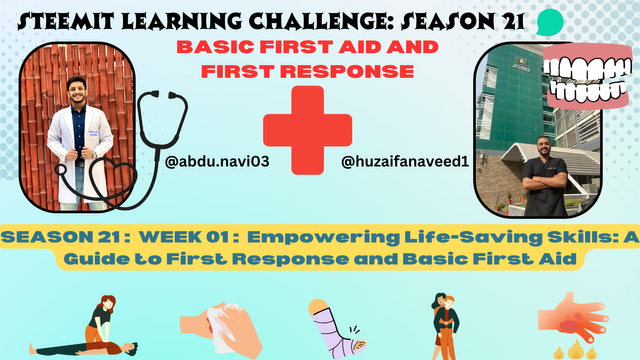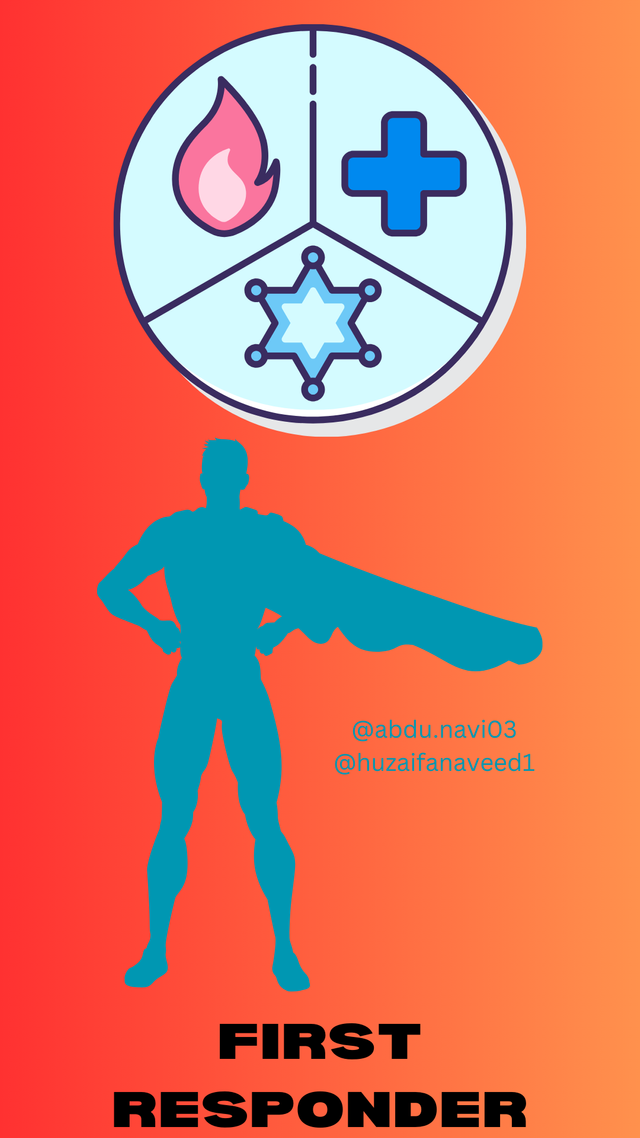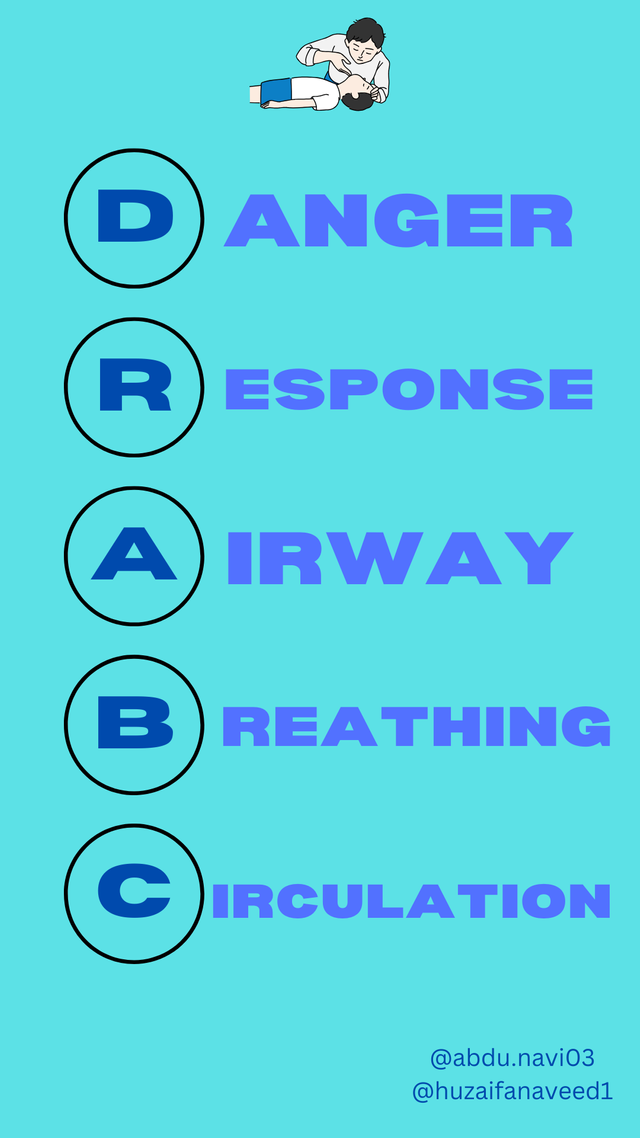SLC-S21W1 | Empowering Life-Saving Skills: A Guide to First Response and Basic First Aid
I remember back in June 2023 I was out with my favorite company (my school friends) at my go-to restaurant, enjoying good food and laughter. But all of a sudden, my friend Hamza went silent, his face went pale, his eyes desperate as he struggled to make a sound. He clutched his chest, his cough barely audible, trying to say something but unable to speak because of the pain. We all thought that he may be pranking us but In a split second, another friend thought he might be experiencing some severe reaction or maybe even a heart attack and reached for an aspirin in his wallet (as he was our senior medical fellow). But then, something clicked—I realized Hamza's hands weren't on his heart but around his throat. He wasn’t having a heart attack; he was choking.
None of us knew what to do. In that panicked moment, we froze feeling helpless, until a first responder came over and quickly performed the Heimlich maneuver to dislodge the obstruction. That experience stayed with me. It sparked my commitment to learn basic first aid and first response skills, leading me to take workshops, courses, and eventually become an instructor with FRIP (First Response Initiative of Pakistan). Through this course, I’m excited to pass on these essential life-saving skills so you, too, can be prepared to help in an emergency.

In this course we will learn;
What is first aid and how its different from first response.
what are different emergencies and how are they managed specifically.
what are the responsibilities of a first responder or first aid provider, keeping in mind the basic protocol to be followed.
Emergencies happen without warning, and knowing the basics of first response can mean the difference between life and death. When I found myself in a situation where a friend was choking, I realized how essential it was to have first-response knowledge. It pushed me to pursue training, and now I want to share this knowledge with you. This course will equip you with essential skills to handle emergencies with confidence and potentially, save lives.
| Aspect | First Response | First Aid |
|---|---|---|
| Definition | It refers to immediate actions taken to assess and control an emergency which can take the life of the person until paramedics arrive. | This is basic medical care given to a person experiencing sudden injury which is not harmful enough to take one's life. |
| Scope | It involves scene management, prioritizing help, and applying life-saving techniques. | It is limited to basic care measures like bandaging, CPR, and managing minor injuries like fractures. |
| Training Level | Requires advanced skills and deep knowledge and understanding. | It is basic to intermediate knowledge. |
| Responder's Role | The first responder stabilizes the casualty and prepares him/her for further medical intervention. | Any trained individual providing immediate care, often without the need for advanced medical equipment. |
| Examples of Actions | C-spine stabilization in road traffic accidents, log-roll techniques, choking maneuvers. | Applying bandages, splints, CPR, and managing minor burns or wounds. |
TYPES OF EMERGENCIES |
|---|
As a First Responder or first aid provider, you will be facing many types of emergencies inorder to deal with them differently you must be first able to understand different types of emergencies and distinguish among them. These are few types of emergencies you will be facing as a first responder:
Medical Emergencies
These are sudden unexpected health-related incidents, thus requiring immediate medical attention. For example: Heart attacks, strokes, severe allergic reactions and seizures.
Identifying this emergency is crucial people usually have sudden chest pain, difficulty breathing, sudden confusion or loss of consciousness or speech or vision. While food allergic casualty presents with symptoms like swelling or trouble breathing.
Trauma and Injury Emergencies
These are physical injuries caused by accidents, falls, or impact forces. Casualty can present with Broken bones, head injuries, deep cuts, severe burns. These are easy to identify as there will be obvious accidental signs in the background and casualty will have visible wounds, bruises, or deformity, severe pain, swelling and bleeding too.
Fire Emergencies
Vehicle fires, gas cylinder burst or gas leakage blasts, short circuits, and random fire caused by friction can lead to this type of emergencies. These are easily identified by visible smoke, flames, or the smell of burning materials.
Environmental Emergencies
These include situations caused by natural or extreme weather events like Earthquakes, flooding or heat stroke etc.
Chemical and Hazardous Material Emergencies
These types of emergencies include all the Incidents that involve exposure to toxic chemicals, like minor gas leaks, chemical spills, radiation exposure.
Psychiatric Emergencies
All those situations where an individual has a risk to harm him/herself or others due to mental health crises like suicidal behavior or severe anxiety attacks.
ROLE OF A FIRST RESPONDER |
|---|
Lets just assume you got an emergency condition in your surrounding can be a minor burn or a devastating road traffic accident and now, you are playing the essential life savior role as a first responder or first aider to provide immediate care until professional help arrives. Here we are going to learn your responsibilities:

1. Assess the Situation
First of all, you are going to Observe and Evaluate the environment for any potential hazards and assess its safety. This includes checking for dangers like fire, toxic or sharp substances, or unstable structures. And then Identify the type of Emergency we discussed earlier, to decide on the appropriate response. Prioritize your and bystanders Safety before moving toward the casualty in order to prevent further harm, for example if there’s an accident on high speed lane of road moving toward that area haphazardly can be dangerous, or broken mirrors can cause your foot injury, that’s why the next step is to clear/secure the scene by controlling crowd or moving harmful objects away.
2. Provide Basic Emergency Care (First Aid)
Now you will Follow the standardized First Response Protocol, the worldwide used one is DRABC (stands for Danger, Response, Airway, Breathing, Circulation).
Administer Life-Saving Interventions: Perform CPR if needed, control bleeding, stabilize fractures, or assist with breathing if there’s an obstruction or difficulty.
Monitor and Comfort: Reassure the casualty and keep them as calm as possible to help prevent shock and distress.
A. Danger
First of all, ensure that the area is safe for you, the casualty, and any bystanders, for which you will be looking for any immediate dangers, such as fires, high speeding cars on road, or unstable/hazardous/sharp objects. If there’s danger, remove it or move yourself to a safe location. Keep this in mind that you are always going to prioritize your own safety first – do not put yourself at risk.
B. Response
Now check if the person is responsive or not, for which gently tap the casualty on their shoulders or face and ask simple questions like, “Can you hear me?” or “Are you okay?” If they respond, that’s great, reassure them and keep them calm, while you continue for assessment for any visible injuries. If they’re unresponsive, continue to the next step.
In the meantime, ask someone from the mob to call for ambulance, tell them the severity of the incident so that they can get necessary things with them, for calling ambulances you must remember your country’s ambulance services helpline numbers. Here are few:
| Country | Emergency Ambulance Number |
|---|---|
| Pakistan | 1122 |
| United States | 911 |
| India | 108 |
| Malaysia | 999 |
| United Kingdom | 999 or 112 |
| Australia | 000 |
| Canada | 911 |
| Germany | 112 |
| France | 15 (or 112) |
| United Arab Emirates | 998 (ambulance) or 999 |
As a first responder you must be knowing helpline numbers of ambulance services, fire brigadiers, police and bomb disposals.
C. Airway
For unresponsive casualty you will going to ensure the airway is open and clear. If not, then carefully tilt their head back and lift the chin to open the airway this technique is known as the head-tilt, chin-lift method. Check for any visible obstructions in the mouth or throat that may be blocking the airway, such as food, blood, or foreign objects. And remember do not attempt to clear a deeply obstructed object just focus on maintaining the intact clear airway until professional help arrives.
D. Breathing
The ultimate next step is to determine if the person is breathing normally or not. For this you will be looking for chest rise and fall, listening for breathing sounds, and feel warmth or breath against your cheek. If they’re breathing normally, that’s great, just place the casualty in the recovery position (on their side) to maintain an open airway.
If they’re not breathing at all or breathing abnormally, then perform CPR (cardiopulmonary resuscitation), which we will learn in next module.
E. Circulation
Lastly according to the protocol, you will check for circulation and see if there’s any severe bleeding. Check casualty’s pulse in arm or in neck region (in arm put your 3 fingers on lateral side or forearm at wrist and for neck put 2 fingers on lateral to trachea) If there’s no pulse then perform CPR (will be taught in next module).
Check for severe bleeding, Apply firm pressure on bleeding wounds with a clean cloth. If possible, elevate the injured area to reduce blood loss

3. Support Emergency Services Upon Arrival
Once the paramedic staff/emergency services arrive you should provide them a brief overview of what has happened and what care was provided.
4. Stay Calm and keep casualty Calm
And Last but not the least reassure the Casualty, that everything will be alright. Keep bystanders and casualty calm as hurry or rush can lead to mismanagement.
HOMEWORK |
|---|
Share your any experience of your life, in which you faced the emergency that could be handled by your own only if you know the basic first response skills. (2 marks)
Imagine you are walking back home, when you witness a road traffic accident between a car and a motorcycle, and the motorcyclist is lying on the road, not moving. There’s some bleeding from his leg, and he appears to be unconscious. You being the first responder, how will you manage this scenario? (1.5 marks)
Draw or Create an engaging illustration/flowchart of DRABC protocol (Try to be creative and don't forget to add your username on the illustration) (2.5 marks)
Write down the numbers of emergency services of your country/area on a paper (Minimum 5, maximum 10) (1.5 marks)
Complete the quiz based on this week's lesson to test your understanding. Access the quiz through this Link (2.5 marks)
RULES |
|---|
Your title should be "SLC21/WK1: Empowering Life-Saving Skills: A Guide to First Response and Basic First Aid"
Make sure to use the #firstaid-s21w1 , #steemexclusive, #teachingteam , #learnwithsteem tags, and your country's tag (e.g., #pakistan)
Plagiarism or the use of artificial intelligence of any kind will not be tolerated.
Only your own images will be accepted (Try to create it on various softwares like Canva, etc) Images for free use will not be allowed.
Write a minimum of 500 words
The link of your task must be added in the comments of this publication.
Use the #burnsteem25 tag only if you have set the 25% payout to @null.
You can publish homework in any community and in any language. But don't forget to use the original tag.
Invite three of your active Steemian friends.
The participation schedule is between Monday, October 28, 2024, at 00:00 UTC to Sunday, - November 3, 2024, at 23:59 UTC.
REWARDS |
|---|
SC01/SC02 would be checking on the entire 17 participating Teaching Teams and Challengers and upvoting outstanding content. Upvote is not guaranteed for all articles. Kindly take note.
At the end of the contest, I will be nominating four (04) users who have had a great performance in the contest and have complied with the previously established, and therefore, are eligible to receive SC01/SC02 votes.
—----
Contact Information (Discord)
@abdu.navi03 (abdu.navi03)
@huzaifanaveed1 (huzaifa_1114)
Best regards,
Dr @abdu.navi03
Dr @huzaifanaveed1
Just for your interest ;-))
https://steemit.com/firstaid-s21w1/@weisser-rabe/slc21-wk1-empowering-life-saving-skills-a-guide-to-first-response-and-basic-first-aid-slc21-wk1-lebensrettende-fertigkeiten
My participation:
https://steemit.com/hive-180106/@wuddi/slc21-wk1-empowering-life-saving-skills-a-guide-to-first-response-and-basic-first-aid
https://steemit.com/hive-103393/@aneukpineung78/slc21-wk1-empowering-life-saving-skills-a-guide-to-first-response-and-basic-first-aid
Thanks, Professor @abdu.navi03. Very important knowledge. Basic, yet important.
https://steemit.com/firstaid-s21w1/@ninapenda/slc21-wk1-empowering-life-saving-skills-a-guide-to-first-response-and-basic-first-aid
Tengo una duda el DRABC son siglas internacionales? Porque en español es PRVRC
https://steemit.com/hive-118902/@xkool24/slc21-wk1-empowering-life-saving-skills-a-guide-to-first-response-and-basic-first-aid
My participación
https://steemit.com/hive-193637/@yahnel/slc-s21w1-habilidades-para-salvar-vidas-guia-de-primeros-auxilios-y-primeros-auxilios-basicos
Hi @abdu.navi03 and @huzaifanaveed1, you need to change the mistake in your title. SEC-S21W1 and not SLC
That is the new title format
Interesting, okay thank you!
Yes I just realized it too, it's now SLC... :D
https://steemit.com/firstaid-s21w1/@goodybest/slc21-wk1-empowering-life-saving-skills-a-guide-to-first-response-and-basic-first-aid
My entry
https://steemit.com/firstaid-s21w1/@alexanderpeace/slc21-wk1-empowering-life-saving-skills-a-guide-to-first-response-and-basic-first-aid